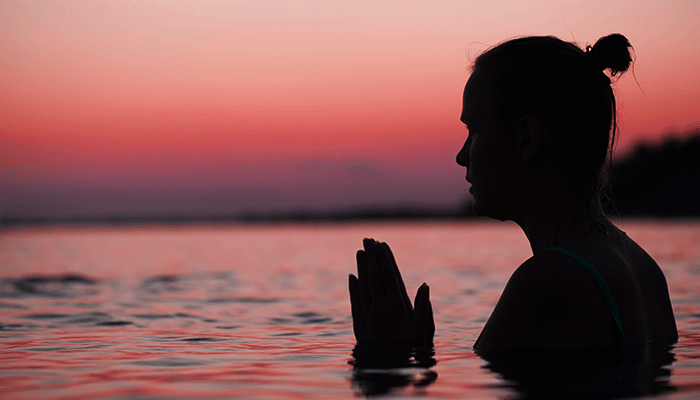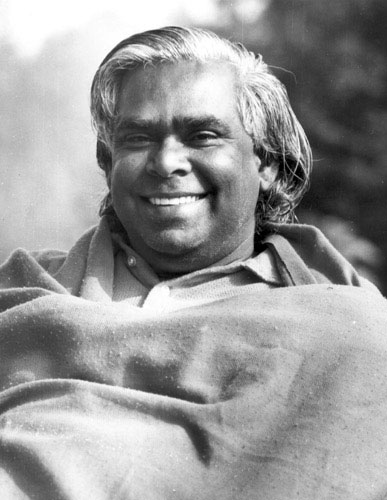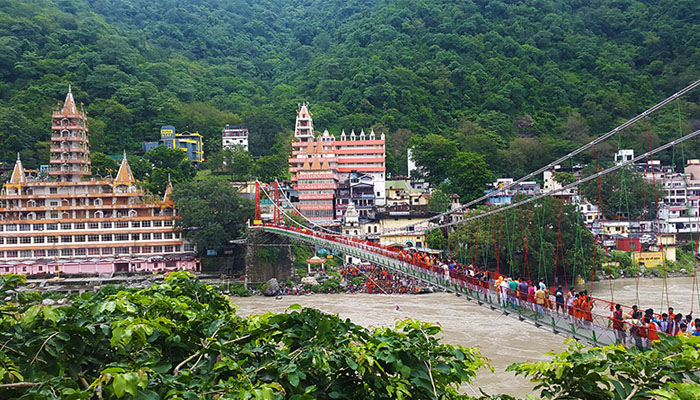My intention for this article is to open up a discussion and share some of my own thoughts and experiences of doing yoga teacher trainings in both London and India. I also want to discuss what it means to be a yoga teacher today, and what counts as sufficient training when courses can vary from being just a few weeks long to a few years.
The origin of the one month yoga teacher training
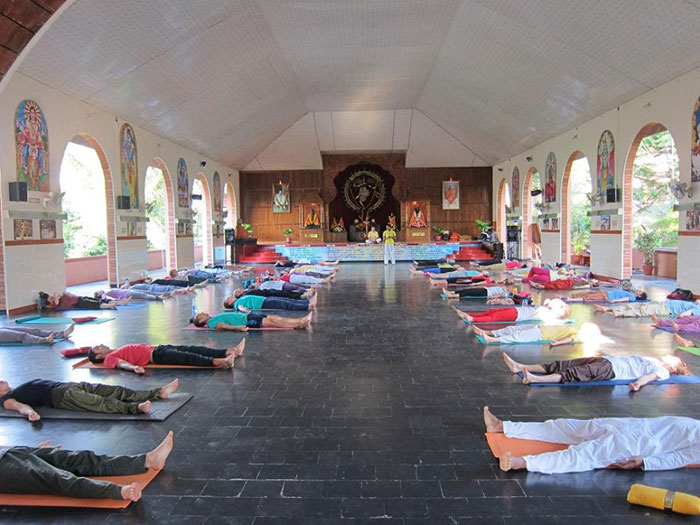
Sivananda Meenakshi Ashram in Madurai, Tamil Nadu. Image source: Sivananda.org
My first glimpse into a yoga teacher training was during my stay at a Sivananda Ashram in Tamil Nadu in 2012. At the time, there was a 200 hour teacher training going on, accredited by the Yoga Alliance, and one of my first thoughts was, ‘They can’t possibly be training to become real yoga teachers after just one month’
However, all the Sivananda teachers I’ve had over the years in London and India have been brilliant. For many teachers, the journey into teaching yoga began with a Sivananda training, which includes one of my teachers from my first yoga teacher training in London.
I’m going to give a simplified overview of the history of Sivananda Yoga which I think is worth mentioning as this was one of the world’s first modern yoga teacher trainings.
Sivananda Yoga was created by physician and spiritual teacher, Swami Sivananda after forming the Divine Life Society in the 1930’s. He had two main disciples, Swami Vishnudevananda and Swami Satyananda who have become the most famous for spreading Swami Sivananda’s teachings.
It was Swami Vishudevananda that popularised the Sivananda school of yoga, bringing it to western cultures and creating one of the first yoga teacher trainings, with the intention of bringing peace to the world. He saw firsthand what a positive impact yoga could have on people’s lives and wanted to share it.
You could therefore trace the origins of the standard Yoga Alliance 200 hour accredited teacher training, back to Swami Vishnudevananda’s mission in the 1960’s.
You can read more about Swami Vishnudevananda’s peace mission here.
The purpose of a yoga teacher training and what makes a good course?
Many yoga schools have followed Swami Vishnudevananda’s lead, and for decades this style of intensive and immersive learning has been incredibly popular throughout the world. However, this does lead me to wonder if one month is long enough to train to become a yoga teacher.
After completing my two teacher trainings in London over one year, I wanted to study more in India. For me, it was important to have an immersive experience as part of my training, because I recognised how much I learnt from just spending two weeks at the Sivananda Ashram. So, I enrolled in a 500 hour three month yoga teacher training at Rishikesh Yog Peeth.
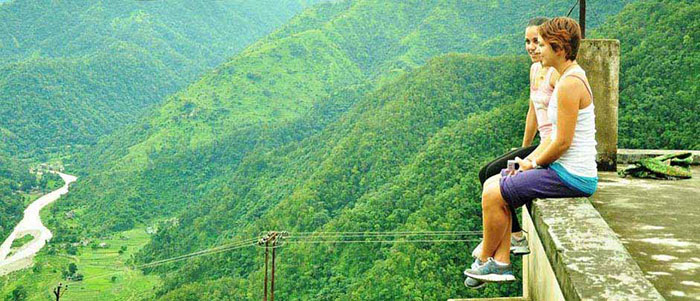
On the roof of Rishikesh Yog Peeth. Image source: Rishikesh Yog Peeth
On the way to Rishikesh, I met a girl who had signed up to do a 200 hour yoga teacher training. She confessed that she’d done yoga just a few times and wanted to do a teacher training, not to teach, but to learn more about yoga and make sure she was doing everything right. For many, yoga starts and ends on a mat — which is how yoga is often presented in the west, so it’s refreshing when people want to know and experience more.
It occurred to me then that there are probably loads of people who do yoga teacher trainings for these reasons, and it leaves me with mixed opinions. On the one hand, I find it irresponsible for a school to open its doors and give out certificates to people who have barely practised yoga.
However, I also find it encouraging that there are a lot of people out there who want a deeper, richer and more authentic experience of what yoga really is. Many people who do want to learn yoga in depth and have that immersive experience might not know where else to look other than to do a teacher training.
There are a lot of other schools who do this, Sivananda being one of them, but there could be more. It would then mean yoga teacher trainings could be open only to people who have spent a sufficient amount of time practising yoga first.
Clearly, with some yoga teacher trainings, one month is long enough. I’ve had some incredible teachers that did a one month Sivananda teacher training as their first TTC. However, these teachers are also likely to be dedicated practitioners of yoga with a consistent self practice, which ultimately, I believe is one of the keys to being a good yoga teacher.
In my experience, a month or even six weeks would not have been long enough for me, but I think this depends on the individual. It took me a year just to learn, absorb and revise for the anatomy and physiology exams on my REPS accredited TTC with Yoga Professionals and YMCAfit. Overall, all my training amounted to just over two years, which felt right for me, but I think it varies from person to person.
What does it mean to be a yoga teacher today?
True yoga is not about the shape of your body, but the shape of your life. Yoga is not to be performed; yoga is to be lived. Yoga doesn’t care about what you have been; yoga cares about the person you are becoming. Yoga is designed for a vast and profound purpose, and for it to be truly called yoga, its essence must be embodied. — Aadil Palkhivala
Despite all my training, and studying, there still seems to be a bit of a gap when it comes to studying the history and origins of yoga. There’s the study of the vedic civilisation, Patanjali’s Yoga Sutras and other ancient texts, and then there’s modern day yoga, which for many is vastly different. What shaped yoga in between these times?
Earlier in 2016, I listened to a BBC podcast called The Secret History of Yoga (only available for people to listen to in the UK), which suggested the more modern styles of yoga such as Ashtanga Vinyasa, had been influenced by 19th century Scandanavian gymnastics.
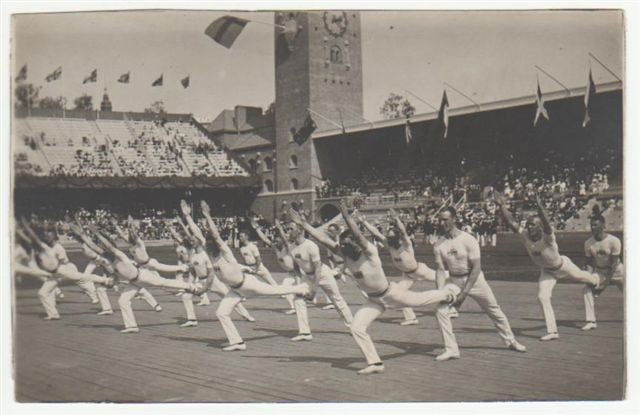
Swedish gymnastics being performed at the Stockholm Olympics. Or are they coming into Warrior 3? Image source: From the article, The origins of yoga part III
Similarly, in the Complete Guide to Yin Yoga, author Bernie Clark, opens the first chapter with, “Modern yoga has its roots deep in Eastern mysticism, has been fertilized by nineteenth-century gymnastics and wrestling, and has been shaped by western sensibilities.”
I love Ashtanga Vinyasa yoga, but it’s definitely not a practice for beginners, and was probably never intended to be. Was this the start of a more physical, athletically focused yoga? And if we are teaching predominantly asana, do we then need to make sure the applied and theoretical anatomy and physiology components of all yoga teacher trainings are up to scratch?
There’s a lot of talk at the moment about raising the standards within yoga teacher trainings, which is definitely a good thing. However, I also think there are other things worth looking at too.
Some studios in London, for example, have more than one teacher when classes are big, so people can be adjusted correctly and no one is doing anything unsafely. However, big mixed ability classes are still very much a thing, and it makes it harder, especially in the faster more yang styles of yoga, to make sure everyone is practising safely.
I’d also like to add that eventhough yoga in the west doesn’t put meditation at the forefront of the practice, yoga is still a practice that takes the practitioner inwards, where things may not always be pleasant. How can we provide training that properly equips teachers to deal appropriately with people who do want to take a more spiritual and meditative approach to yoga?
Yoga, an ancient but perfect science, deals with the evolution of humanity. This evolution includes all aspects of one’s being, from bodily health to self realization. Yoga means union – the union of body with consciousness and consciousness with the soul. Yoga cultivates the ways of maintaining a balanced attitude in day to day life and endows skill in the performance of one’s actions. — B.K.S Iyengar
The difference between learning yoga in London and India
Yoga originally may have been more about meditation. However, in the west, asana has now taken the lead, making it more important than ever to be able to adapt poses for all levels so people are moving their bodies safely and not pushing themselves beyond their means.
My London course certainly emphasised safety and modifying poses for all levels. I also respected that there were three formal exams in anatomy and physiology, which are the same exams you’d sit if you were training to be a personal trainer at a level 3 standard.
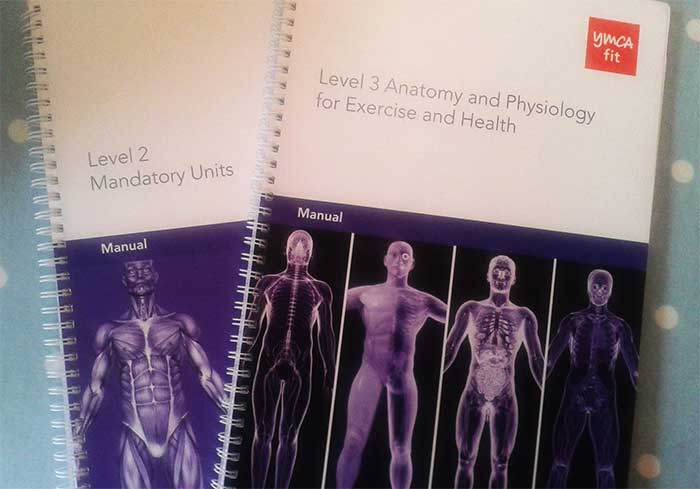
I had to take several anatomy and physiology exams alongside applied anatomy during my London TTC. However, in India, there were no formal exams, other than coursework and my practical teaching assessments. However, there were more teaching hours devoted to applied anatomy and correct alignment on my India course. From your own experiences, do you think taking formal exams is necessary or not?
I think there are pros and cons to studying intensively and spreading your learning out over the course of a year or two — I wanted to experience both sides.
There was a lot of independent learning on my London course which was great, but for me, it was also important for me to spend a sufficient amount of time learning directly from my teachers, which is why my time in India was so important.
One of my teachers in India, Krishna (who now runs Samatva Yogalaya) came from an Iyengar background and was also a naturopathic doctor who taught me a lot. In India, we also had the opportunity of arranging daily one to one sessions with our anatomy and physiology teacher, to discuss any parts of the course in more depth and learn more on an individual basis.
While I do think it’s important to have time to absorb the teachings of yoga and actually take formal exams in subjects such as anatomy and physiology, my three months in India had heart. I was also learning with many teachers who had been teaching for much longer than me, who all came from different traditions and styles of yoga and fitness. I learnt a lot from them as well as my teachers there.
However, it wasn’t just the content of the course, my teachers, and the good friends I made during my time in India, it was having the chance for three months to really focus on just one thing that I’m passionate about, which can be so rare in this fast paced world.
I got to study by the River Ganges, and soak up all the experiences and lessons India threw my way, and apply yoga to all parts of my life, not just the time on my mat or during lectures, and for this I’m truly grateful. However, I don’t think my training would be complete if it wasn’t for my first two courses in London which really did give me the foundation to build on.
I’m going to write an in depth breakdown of the specific differences between my courses in another article, but what I will say is that studying yoga and meditation in both London and India gave me quite a contrasting, thorough and well rounded teacher training experience and an unforgettable two years. Let the learning continue.
My yoga and meditation teacher trainings from 2014-2016
In case, you’re interested, here’s a breakdown of the teacher trainings I’ve done. I now teach Hatha yoga and meditation to individuals and couples in London.
- Meditation, Stress Management, Applied Philosophy & Eastern Psychology course, with Inside Meditation, accredited by Yoga Alliance Professionals — 200 hours | completed in one year | Location: London
- Level 3 yoga teacher training diploma with Yoga Professionals and YMCA Fit, accredited by the Register of Exercise Professionals | completed in one year | Location: London
- Yoga teacher training in India with Rishikesh Yog Peeth, accredited by the Yoga Alliance — 500 hours | completed in three months | Location: London
Further resources
Yoga International article: How to choose a yoga teacher training
Finding yoga courses and trainings in India: Yoga.in
Book I highly recommend : Teaching Yoga: Exploring the Teacher-Student Relationship by Donna Farhi
Yoga does not remove us from the reality or responsibilities of everyday life but rather places our feet firmly and resolutely in the practical ground of experience. We don’t transcend our lives; we return to the life we left behind in the hopes of something better.— Donna Farhi
Yoga teacher trainings: what are your thoughts?
Finally, I’d love to hear your thoughts. What constitutes a good yoga teacher training to you? What have been your TTC experiences wherever you studied? And how can we improve the quality of yoga teaching?

